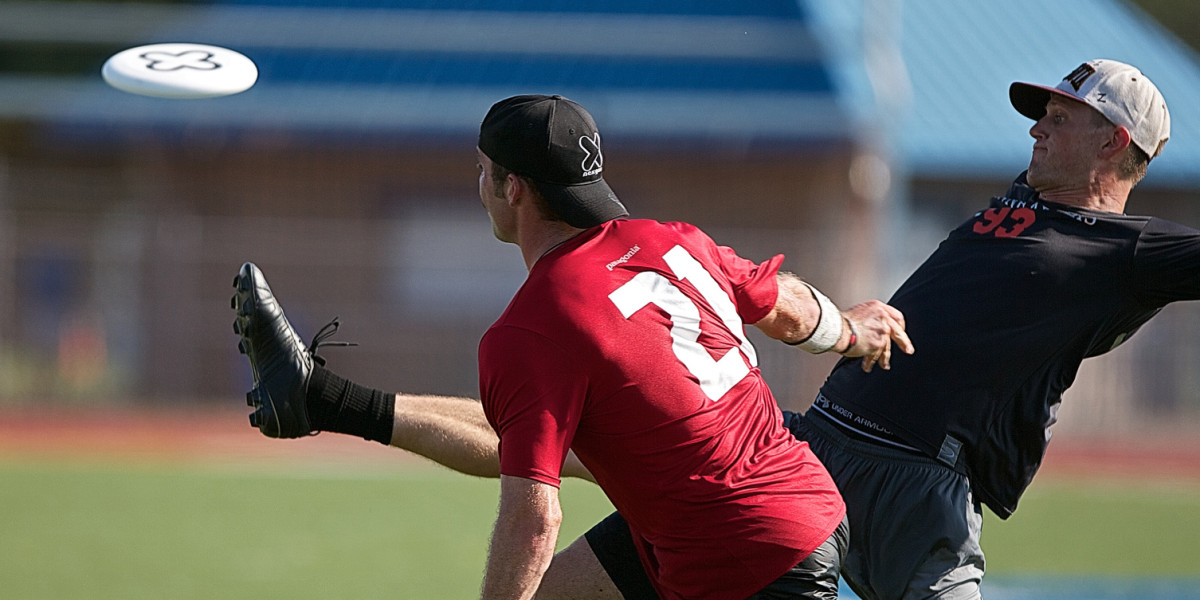 Alex Fraser - UltiPhotos.com
Alex Fraser - UltiPhotos.com
Everyone wants to get better at throwing. But how do we actually do that?
Before I started on the 2012 NexGen Tour, I thought I was a pretty good thrower. I was throwing full field backhand hucks, 40 yard flick hucks, and low release breaks on each side, both inside-out and outside-in. All things considered, that skill set was pretty strong.
But once I started the tour, I saw my NexGen teammates using unique throws to create winning opportunities when normal players would have thrown a lesser throw.
It showed on the scoreboard: we were beating the best club teams in the country. We were young, but I think man for man, we had better disc skills than the teams we played, and that was a huge contributor to our success.
Alex Thorne as a prime example of that skill. Throughout the Tour, he threw scores in ways other people just couldn’t. Check out this no-pivot quick around outside-in backhand to space:
And check out this around high release dagger to the break side:
…can you do that? It seemed like wherever Thorne had the disc, he had a throw in his pocket that could score.
[cm_ad_changer campaign_id=”9″]
Here’s another example of skillful throwing: several times, we completed hucks to receivers that were not open vertically, but did have some horizontal separation from their man. This throw from Thorne stays mostly over the breakside and lands more on Tylers line than the defender’s line. As a result, Tyler has the more direct angle on it, despite Tyler not being completely open in the first place.
With a lot of precision, he turned a covered deep cut into a goal.
And it wasn’t just Alex. The bus was brimming with throwing talent that got us out of sticky situation after sticky situation. EJ’s flick huck to Will Driscoll is another shining example of how hucks over the breakside turn covered cuts into goals. No hesitation, just execution.
So, a summer with throwers as good as the NexGen Guys got me thinking. What did I need to do to reach the top of the throwing game?
After another year of club, I had an idea: in order to get better at throwing, we need to be more specific when we talk about throws.
For example, great throwers don’t just throw forehands. They throw something much more complicated; perhaps a step-back mid-release outside-in 40 yard around forehand breakmark huck (with low nose tilt to combat the wind). A throw like that is definitely something special. So in order to learn advanced throws, we need to increase our vocabulary to be much more descriptive.
Here some components I’ve thought about so far:
- release point
- angle on the disc (IO or OI)
- breakmark/not breakmark
- nose up/nose down
- angle of pivot
- throw distance
- direction of throw (is the throw’s trajectory towards the inside or outside)
- bodily momentum
- height the throw reaches at its peak.
Here is another example of how being descriptive can help you learn advanced throws. Saying that Jimmy Mickle has a great flick huck doesn’t help anyone learn how to throw better. What we actually want to say is that Jimmy Mickle commonly throws flick hucks that have a hip level release point, very slightly OI, with a low nose tilt, pivoting slightly forward but mostly laterally. He turns his left shoulder to the target while winding up, and the throw at its peak reaches about 20 feet. If we use the right words, we can really capture what is special about his throws, and in turn that allows us to learn.
In regards to how you can use this vocabulary to improve your game, improving at throwing is as simple as identifying a new throw and then checking it off your list. Whereas a traditional goal might be to “work on my backhand breakmark throw,” it should really be “master the low IO cross-body backhand with a 90 degree step out that reaches exactly the receiver’s shoulder height.”
My advice: pick one or two new specific throws to work on now. In a couple months, maybe you’ll get the hang of it. Then, pick one or two more. Imagine the improvement you could make in a year by being so focused on the details.
The more of these hyper-specific throws you check off your list, the better of a thrower you’ll be. To throw like a superstar you’ve got to have the repertoire of a superstar.









Comments Policy: At Skyd, we value all legitimate contributions to the discussion of ultimate. However, please ensure your input is respectful. Hateful, slanderous, or disrespectful comments will be deleted. For grammatical, factual, and typographic errors, instead of leaving a comment, please e-mail our editors directly at editors [at] skydmagazine.com.